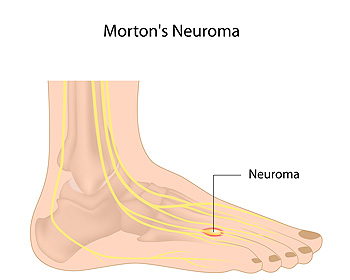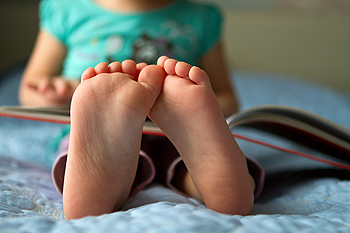 The heel of the foot is sometimes referred to as the “hindfoot", and consists of various types of tissues. If damage should occur to these group of tissues, the result may be heel pain. Research has indicated there are several kinds of heel pain, including plantar fasciitis, Achilles tendonitis, and nerve disorders. The former will often cause pain that is typically worse as the first steps are taken in the morning and may improve if proper foot stretches are performed. The Achilles tendon connects the calf muscles to the heel. If this should become torn as a result of an injury, Achilles tendonitis will develop. This is often treated with physical therapy, or by wearing orthotics. It is common for many diabetic patients to experience nerve disorders, and heel pain can develop as a result of having peripheral neuropathy. If you have any type of heel pain, it is suggested to counsel with a podiatrist who can perform a proper diagnosis and begin correct treatment techniques.
The heel of the foot is sometimes referred to as the “hindfoot", and consists of various types of tissues. If damage should occur to these group of tissues, the result may be heel pain. Research has indicated there are several kinds of heel pain, including plantar fasciitis, Achilles tendonitis, and nerve disorders. The former will often cause pain that is typically worse as the first steps are taken in the morning and may improve if proper foot stretches are performed. The Achilles tendon connects the calf muscles to the heel. If this should become torn as a result of an injury, Achilles tendonitis will develop. This is often treated with physical therapy, or by wearing orthotics. It is common for many diabetic patients to experience nerve disorders, and heel pain can develop as a result of having peripheral neuropathy. If you have any type of heel pain, it is suggested to counsel with a podiatrist who can perform a proper diagnosis and begin correct treatment techniques.
Many people suffer from bouts of heel pain. For more information, contact one of our podiatrists of Westside Podiatry Center, LLP. Our doctors can provide the care you need to keep you pain-free and on your feet.
Causes of Heel Pain
Heel pain is often associated with plantar fasciitis. The plantar fascia is a band of tissues that extends along the bottom of the foot. A rip or tear in this ligament can cause inflammation of the tissue.
Achilles tendonitis is another cause of heel pain. Inflammation of the Achilles tendon will cause pain from fractures and muscle tearing. Lack of flexibility is also another symptom.
Heel spurs are another cause of pain. When the tissues of the plantar fascia undergo a great deal of stress, it can lead to ligament separation from the heel bone, causing heel spurs.
Why Might Heel Pain Occur?
- Wearing ill-fitting shoes
- Wearing non-supportive shoes
- Weight change
- Excessive running
Treatments
Heel pain should be treated as soon as possible for immediate results. Keeping your feet in a stress-free environment will help. If you suffer from Achilles tendonitis or plantar fasciitis, applying ice will reduce the swelling. Stretching before an exercise like running will help the muscles. Using all these tips will help make heel pain a condition of the past.
If you have any questions please contact one of our offices located in Liverpool, Camillus, Skaneateles, Oswego, and Cicero, NY . We offer the newest diagnostic and treatment technologies for all your foot and ankle needs.




 Morton’s neuroma
Morton’s neuroma



